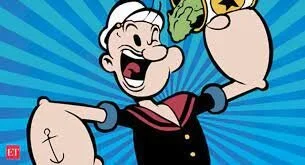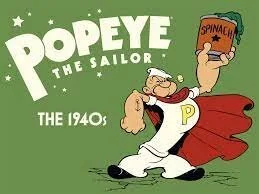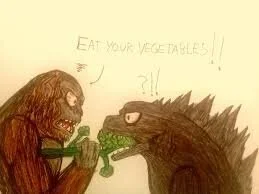The Problem With Spinach
Originally published on August 10, 2021
What’s the problem with spinach anyway? Well, my wise counsel Andrew Loosely once wrote a highly successful blog with that snappy title (https://naturalfertilityexpert.com/the-problem-with-spinach/) and gave me permission to copy it, so there…. To learn about the problem with real spinach, especially in regards to fertility issues, you will have to read his blog directly, by the way.
THE PRESENT POST USES THE SPINACH PROBLEM TO CONSIDER THE PROBLEM OF ABSORBING THE WISDOM FROM THE CHINESE MEDICINE CLASSICS AS PART OF A PRACTITIONER’S EDUCATION AND CULTIVATION.
If you have read this far and know what I am talking about, you are either a genius or a triple monkey like myself. Spinach…. Classical Chinese…. Chinese medicine??? What do these three things have in common? Any other triple monkeys out there?
WELL….. THE KEY LINK CONNECTING THEM ALL IS THE WORD “ABSORPTION.”
As Andrew explains in his blog, while spinach is chock full of iron, it is a kind of iron called “non-haem iron,” which has a much lower absorption rate than beef, for example. And it contains other ingredients that may not be so good for you unless it is properly prepared or presented in the right context, such as cooked and/or covered in lemon juice. So the mere fact that spinach is high in iron does not mean that a person with an iron deficiency should be consuming mountains of spinach every day, contrary to what Popeye the Sailor may be telling you.
YOU PROBABLY REALIZE THAT A SAILOR MAY NOT BE YOUR BEST SOURCE FOR INFORMATION ON NUTRITION, REGARDLESS OF THE SIZE OF HIS BICEPS (OR THE SMALLNESS OF HIS PIPE).
In a situation similarly related to the issue of absorption, these days it is a common refrain that our current education system for Chinese medicine in the West is not able to adequately supply many practititioners’ need for the foundational wisdom in the classical texts. While we have not yet developed scientific tests to objectively assess the level of tCmw (“traditional Chinese medicine wisdom”) in an individual doctor, many doctors do subjectively feel tCmw-deficient, and countless experts have described the detrimental effects of tCmw-deficiency on the clinical practice of Chinese medicine.
In response to this problem, teachers and curriculum developers in the schools, publishers and translators, and continuing education providers have created many resources to allow practitioners to read and study the classical texts in English translation. Obviously, English translations of the classics are the richest source of tCmw available to Western practitioners. And compared to the dire situation even a decade or two ago, it is now quite possible to get a comprehensive reading list of all the major texts in translation. To cite just one example, the biggest distributor of books on Chinese medicine in the US, Redwing Books, lists 41 titles under “Classical Chinese medicine,” compared to 173 under “Chinese Medicine, TCM”!
So what, then, is the problem with the classics?
This is where the spinach analogy comes in: it’s all about the absorption. In my experience, reading straightforward literal translations of the Chinese classics in a modern Western language is a bit like the iron in spinach: While, yes, it appears to be the perfect match for the tCmw deficiency that so many current students and practitioners are suffering from, it is also quite likely to give us indigestion. And without the cheery advocacy of a brawny sailor, it may even turn some involuntary recipients of this form of tCmw who may have had it forced down their throats in an institutional setting, into flat-out tCmw rejectors, just like kids who grow up believing that they hate vegetables because they have been told far too many times to “EAT YOUR VEGETABLES! THEY ARE GOOD FOR YOU!”
I personally love my Chinese medicine classics even more than I love my kale! As such, it saddens me that students might walk away from their limited exposure to the classics thinking of them as dreary, brainy, irrelevant to clinical practice, and completely outdated.
I AM HERE TO TELL YOU THAT THE CLASSICS, LIKE SPINACH, ARE DELIGHTFUL, DELICIOUS, (DIVINE,) AND DE-LOVELY!
I am also here to tell you that the issue is not the classics per se, but our method of delivery, or in other words, the inability of a normal human being to absorb tCmw by simply reading the classics in translation. It just doesn’t work that way. And I say that fully aware of the irony of this statement coming from somebody who has dedicated much of my adult life to the effort of translating the classics.
TO UNLOCK THE TCM CONTENT IN THE CLASSICS AND MAKE IT ABSORBABLE FOR THE AVERAGE PRACTITIONER REQUIRES MUCH, MUCH MORE THAN A LITERAL TRANSLATION.
Let me give you an example: You are probably familiar with the famous passage from Sùwèn 1 where Qí Bó explains to the Yellow Emperor how female and male bodies develop and age in cycles of seven and eight, respectively. Here is the first section on women’s cycle of life:
Qí Bó said: “When girls are in their seventh year of life, their kidney qi begins to flourish, their teeth change, and the hair on their head grows long. In their fourteenth year, the tiānguǐ arrives, the flow in the Rènmài penetrates, the great Chōngmài is exuberant, and the menses descend in a timely manner. Therefore they can have children. In their twenty-first year, the kidney qi is balanced and even. Therefore the true [i.e., wisdom] teeth are born and growth reaches its limit. In their twenty-eighth year, the sinews and bones are firm, the growth of head hair has reached its limit, and the body is exuberant and strong. In their thirty-fifth year, the Yángmíng vessel weakens, the face becomes scorched, and the hair begins to fall out. In their forty-second year, the three yáng vessels weaken above, the face is scorched all over, and the head hear begins to turn white. In their forty-ninth year, the Rènmài is empty (xū), the great Chōngmài is weakened and reduced, the tiānguǐ is exhausted, and the pathways of the earth are impenetrable. Therefore their physical body has gone bad and they can no longer have children.
This is my literal translation, the best I can do at this point. There are two phrases here in particular that raise more questions than they answer, to any honest translator:
FIRST, THAT PESKY TERM TIĀNGUǏ, WHICH I HAVE SIMPLY LEFT IN PĪNYĪN.
Of course that’s the easy way out, you can argue. But how else do we translate it? I have played with “Heavenly Yīn Water” as a literal translation, but does that really give you more information than tiānguǐ? Modern TCM versions of this passage translate it as “menstruation” and explain it as somehow related to the pituitary-ovarian axis, or to the endocrine system that triggers hormonal change, but then what do you call the tiānguǐ that arrives in boys when they reach their sixteenth year of life?
AND AN EVEN THORNIER ISSUE, IN MY OPINION: THE STRANGE EXPRESSION 地道不通…
I have translated it literally as “the pathways of earth are impenetrable.” Sometimes explained in TCM literature as a reference to the Fallopian tubes or the structure of women’s reproductive system in general, readers and commentators have disagreed on the meaning of this term for almost as long as this text has been transmitted. Could it refer to the vessel paths of the lower body or specifically the hand shaoyin channel, associated with the kidney and tiānguǐ?
Presumably, “earth” here is used in contrast with its opposite, namely “heaven.” But what aspect of this duality is important? Below versus above? Female versus male? Material and substantial versus immaterial and numinous? Yīn versus Yáng? Or all of the above?
CAN YOU SEE HOW MUCH FUN IT IS TO EXPLORE THIS PUZZLE, FOR THE SHEER JOY OF PUZZLING, AND HOW MUCH YOU CAN LEARN IN THE PROCESS? AND HOW YOU REALLY MISS THE POINT OF A GOOD PUZZLE IF YOU SIMPLY HAVE A FAMOUS PUZZLE MASTER PUT THE PIECES TOGETHER AND PRESENT YOU WITH THE FINAL PRODUCT?
The point of puzzling is not, after all, to create the final picture, frame it, and hang it on the wall, but to while away a pleasant afternoon in good company and then take the whole thing apart and pass it on to the neighbor.
In my experience, learning to read the classics of Chinese medicine, by actually studying medically oriented classical Chinese language, is just like puzzling and requires the following similar skills:
time,
patience,
non-attachment to the outcome,
tolerance for an occasional missing piece that was lost by a previous puzzler,
a sensitive hand for pieces that just don’t quite fit and must not be forced together, and
the ability to look at a piece of information from all sorts of different angles while at the same time remembering the context of the entire composition.
And in both activities, the bigger and more complicated the project is, the more enjoyable it is to do in good company.
IF YOU LIKE A GOOD PUZZLE, OR A BOWL OF BRIGHT GREEN SPINACH SOUP WITH A BIG PILE OF HOME-MADE GOAT CHEESE ON TOP, OR ARE JUST CURIOUS ABOUT WHAT OTHER METAPHORS SABINE’S MONKEY MIND MAY COME UP WITH NEXT, WHAT ARE YOU WAITING FOR? WHY DON’T YOU CHECK OUT MY TWO NEWEST CREATIONS, WHICH AIM TO HELP YOU IN READING THE CHINESE MEDICINE CLASSICS:
My mentorship in Reading the Chinese Medicine Classics, a monthly membership program that intends to inspire and challenge you with a succession of brief weekly lessons and a set of translation challenges each month, from individual characters to longer passages; and
My Triple Crown Intensive Training Program that starts on September 14 with “Foundations,” a five-month course with weekly formal lectures, homework assignments, online discussions, live Q&A sessions, and inspiration from the Peach Blossom Spring Collective.
The doors are open, the tables are set, your companions are sitting down, and the tea water is hot. Join us on September 14, email me for questions to info@imperialtutor.com, check out the FAQ page for a comparison, or better yet, fill out the survey below, and I will respond with my personalized recommendation for you.





